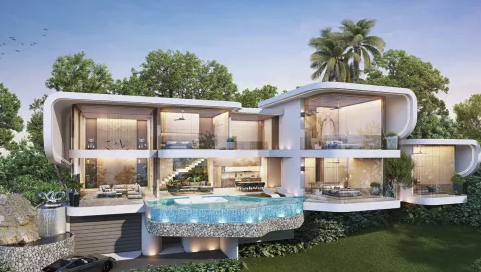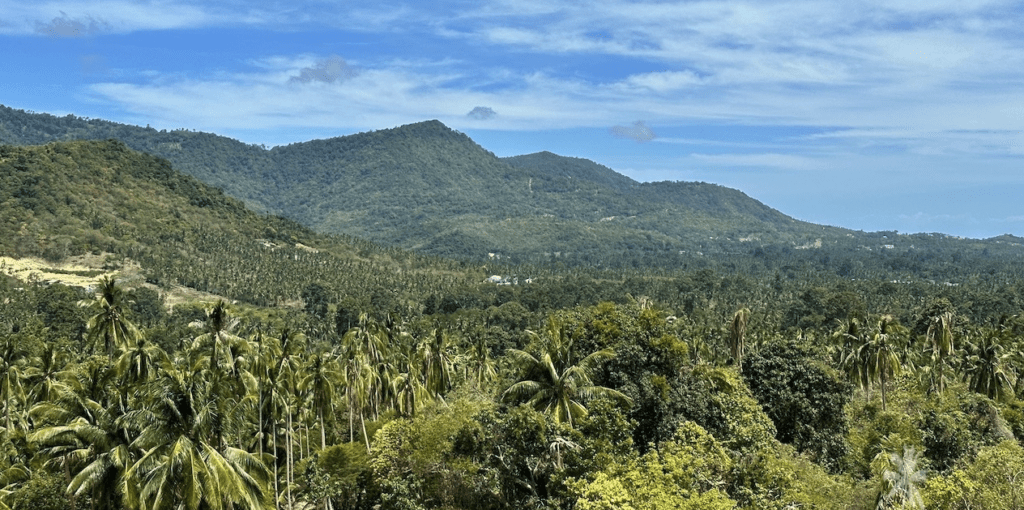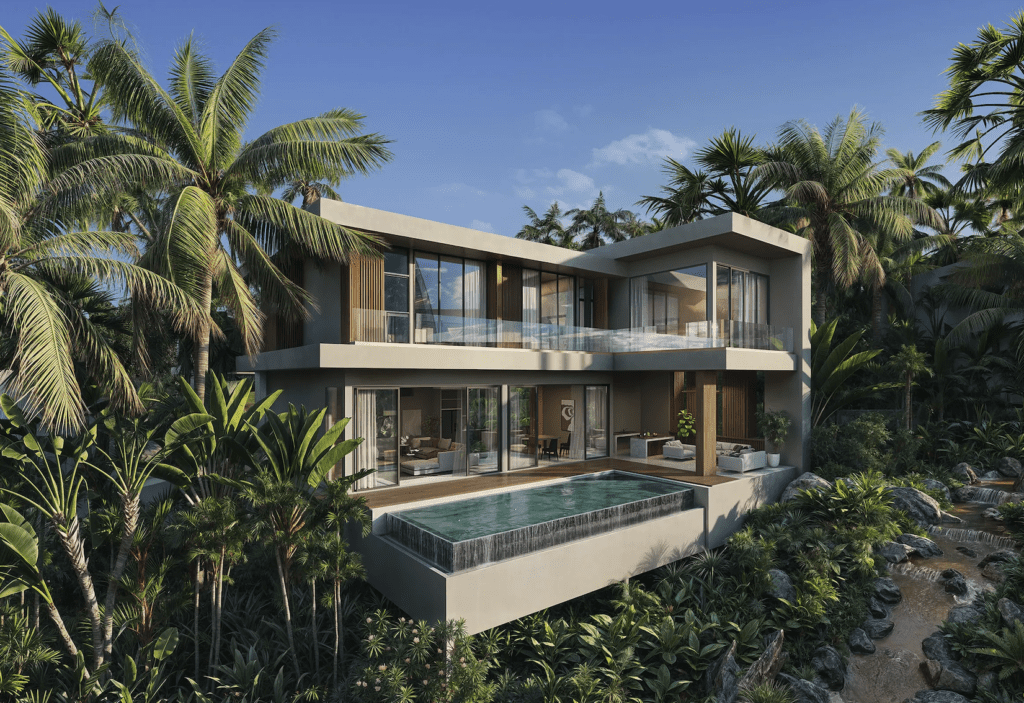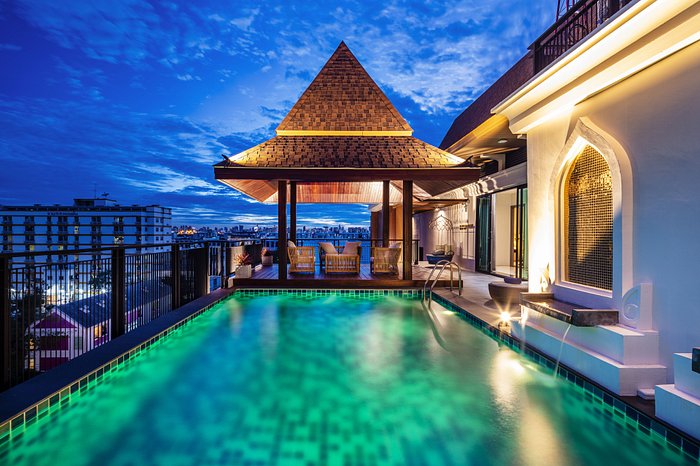When envisioning your dream villa, it’s easy to focus on aesthetics or architectural style. However, it’s essential not to overlook the critical role the orientation of your house plays. It doesn’t just dictate the exterior appearance or the view from your windows; it fundamentally impacts your daily well-being by influencing both your indoor comfort and the energy efficiency of your home.
Architects, when designing villas, carefully consider key factors like the local environment, climate, and natural elements such as sunlight and wind. These aren’t just technical considerations—they form the foundation of a living space that harmonizes with nature. A well-oriented villa offers spaces flooded with natural light, stays cool in the summer, and provides thermal comfort during the winter. The orientation of your villa affects everything from temperature regulation to lighting needs, and can significantly reduce energy consumption, benefiting both your wallet and the environment.By understanding the impact of orientation in villa design, you take a meaningful step toward a more sustainable and healthier way of living. It’s about transforming your home into a sanctuary where each room smartly utilizes what nature offers while minimizing your ecological footprint. With thoughtful orientation, you create a villa that not only reflects your personal style but also aligns with a more eco-friendly future.
Enhancing Comfort Through Proper Orientation
One of the most compelling reasons why the orientation in villa design is so crucial is the profound impact it has on your indoor comfort. A villa that is designed with a thoughtful approach to its surrounding environment, especially considering factors like sunlight and wind patterns, ensures a balanced and harmonious living space. By aligning the house orientation with natural elements, your home can maintain a consistent and comfortable temperature throughout the year, making the interior pleasant regardless of the season.
A key element in achieving this balance is managing solar heat gain—the heat absorbed from the sun’s rays. Proper house orientation allows your villa to take full advantage of the sun’s warmth during colder months, particularly by placing windows and living spaces to face the sun. South-facing windows, for example, can capture maximum sunlight in winter, helping to maintain thermal comfort by naturally warming your home. This reduces the reliance on heating systems, which not only increases your comfort but also improves your villa’s overall energy efficiency. A well-oriented villa maximizes comfort and sustainability by considering factors such as solar heat gain and natural ventilation. According to the U.S. Department of Energy, thoughtful solar design can significantly reduce heating and cooling costs by utilizing sunlight and shade strategically.
Conversely, during the hot summer months, controlling the amount of direct sunlight that enters your home is essential to avoid overheating. By minimizing exposure to harsh sunlight through strategic window placement or using shading devices like overhangs or pergolas, your villa remains cooler, reducing the need for air conditioning. This thoughtful orientation ensures that your living spaces remain cool and comfortable, without the energy-intensive use of cooling systems, contributing to a more sustainable and eco-friendly lifestyle.
In addition to sunlight management, aligning your villa’s design with the natural wind flow is another crucial aspect of enhancing comfort. When you position windows and openings to take advantage of cross-ventilation, the natural breeze flows through your home, creating continuous fresh air circulation. This not only helps to regulate the indoor temperature but also improves air quality, ensuring a more pleasant and healthy living environment. Cross-ventilation reduces the need for mechanical ventilation systems, meaning your villa stays cool and airy naturally, further enhancing its energy efficiency.
By embracing these principles of house orientation, your villa becomes a living space that feels in tune with the natural rhythms of the environment, offering comfort in both warm and cool seasons while lowering energy consumption.

Reducing Energy Consumption and Costs
One of the most practical and long-term benefits of considering the orientation in villa design is its direct impact on energy efficiency. By carefully positioning your villa to interact optimally with natural resources like sunlight and wind, you can significantly reduce the need for energy-intensive systems such as artificial heating, cooling, and lighting. This holistic approach to energy management not only creates a more comfortable living environment but also leads to substantial savings on utility bills, while dramatically lowering your home’s carbon footprint.
A well-designed house orientation leverages natural daylight to illuminate interiors, reducing the reliance on artificial lighting. By maximizing the amount of natural sunlight that enters your villa, particularly through large, well-placed windows, you reduce the need for electric lighting during the day. In winter months, strategically placed south-facing windows capture the sun’s warmth, naturally heating your home and reducing the demand for energy-hungry heating systems. This efficient use of natural light and warmth lowers your energy consumption, contributing to a more sustainable and cost-effective household.
In addition to harnessing natural light, a properly oriented villa takes full advantage of passive solar design strategies. Passive solar design allows your home to absorb and store solar energy, which can then be used to maintain indoor comfort during cooler periods. A villa with a south-facing orientation benefits most from this approach, as it allows sunlight to penetrate deeply into the home during winter, providing a consistent source of heat that reduces reliance on artificial heating systems. Incorporating passive design elements, such as shading devices and strategic window placement, plays a key role in minimizing energy use. The National Renewable Energy Laboratory (NREL) highlights that passive solar design reduces reliance on artificial systems, aligning with eco-friendly and cost-effective construction practices.
During summer months, when the sun’s heat can become overwhelming, incorporating shading devices such as overhangs, pergolas, or even well-positioned trees can block excessive sunlight and prevent your villa from overheating. These shading strategies allow you to maintain a cooler indoor environment without having to resort to air conditioning, which can significantly lower your energy usage during the hottest months of the year. The result is a villa that remains comfortable year-round with minimal need for energy-intensive heating and cooling systems.
Moreover, the integration of natural wind patterns into the villa’s design further reduces the need for mechanical ventilation systems. By positioning windows to facilitate cross-ventilation, cool breezes can naturally flow through your home, helping to regulate indoor temperatures without the need for energy-intensive cooling systems. This strategic use of natural airflow keeps your living spaces comfortable while cutting down on electricity usage, enhancing both the comfort and energy efficiency of your villa.Ultimately, designing your villa with energy conservation in mind not only creates a more eco-friendly and cost-effective living space but also enhances your connection to the natural environment. Each decision you make, from window placement to shading devices, helps optimize energy usage, reducing your environmental impact while ensuring your home remains a haven of comfort and sustainability.

Impact on Sustainability and Environmental Footprint
Designing a villa with sustainability at its core requires a deep understanding of how the building interacts with its natural surroundings. The orientation of your house plays a pivotal role in determining how eco-friendly and resource-efficient your villa will be. By optimizing the positioning of your villa, you can significantly reduce the need for energy-intensive systems such as heating, cooling, and artificial lighting. This, in turn, contributes to the long-term conservation of energy and natural resources, helping to lower your overall environmental footprint.
A properly oriented villa harnesses the natural elements—particularly sunlight and wind—to regulate indoor temperature and provide natural lighting. This minimizes the dependency on energy-consuming systems, such as air conditioners or heaters, reducing the overall energy consumption of your home. The less energy required to keep your villa comfortable, the fewer fossil fuels are burned, leading to a direct reduction in greenhouse gas emissions. In this way, your villa becomes part of the solution in the global push toward environmental preservation, promoting sustainability at every level.
Another important consideration for improving your villa’s sustainability is the integration of renewable energy sources like solar panels. To make the most of solar energy, the roof and walls of your villa should be carefully oriented to face the sun, capturing the maximum amount of solar energy throughout the day. South-facing roofs are particularly effective in many regions, as they receive the most sunlight, allowing your villa to generate clean, renewable energy that powers your home. The use of solar energy not only drastically reduces your reliance on conventional power grids but also lowers your utility costs, making your home more self-sufficient and reducing its overall environmental impact.
Incorporating passive solar design principles into the structure of the villa further enhances its sustainability. This involves positioning the villa to take full advantage of solar gain during the winter months while incorporating shading devices to reduce heat absorption in summer. This intelligent use of the sun’s energy helps maintain a comfortable indoor environment throughout the year without the need for energy-intensive climate control systems. As a result, the villa consumes less energy overall, further reducing its carbon footprint.
In recent years, architects and homeowners alike have begun focusing on creating homes that blend seamlessly with their natural surroundings. Rather than building houses that require significant energy inputs to maintain comfort, the goal is to design villas that naturally work with the environment. By using natural resources such as sunlight and wind for heating, cooling, and ventilation, homes can become more sustainable. This approach reduces the need for technological interventions, creating a more harmonious relationship between the villa and its surroundings. The result is an energy-efficient home that not only saves resources but also enhances your connection to the environment, making for a more sustainable and responsible way of living.The thoughtful orientation of your villa, combined with renewable energy systems and the use of natural elements, ensures that your home contributes to environmental conservation while still offering luxurious and comfortable living. These sustainable practices reduce your villa’s overall environmental footprint, making it an example of how modern architecture can meet the challenges of climate change and resource conservation.

Key Considerations for Villa Orientation
Designing a villa with the optimal orientation requires thoughtful planning and attention to several crucial factors. Each element of the villa’s orientation influences its energy efficiency, thermal comfort, and overall sustainability. By strategically positioning your villa to take advantage of natural elements such as sunlightand wind, and integrating these factors into the architecture, you can create a home that is both eco-friendlyand perfectly suited to its environment. Here are some of the most important considerations to keep in mind when planning your villa’s orientation.
Solar Orientation
Solar orientation is one of the most critical aspects of villa design. It refers to how your villa is positioned relative to the sun’s daily and seasonal paths. By aligning your villa to make the most of solar energy, you can naturally heat and illuminate your home, especially during the cooler months. In many climates, having south-facing windows and living spaces is highly beneficial because these areas receive the most sunlightthroughout the day, particularly during winter. This orientation helps to capture natural heat, providing warmth and reducing the need for artificial heating, which enhances the overall energy efficiency of the villa.
During the summer months, when solar heat gain can become excessive, proper solar orientation helps manage the amount of direct sunlight that enters your home. You can use shading devices or architectural features like overhangs to block harsh sun rays during peak heat hours, reducing the need for air conditioning. This approach minimizes energy consumption and ensures your villa stays comfortable year-round without over-reliance on mechanical systems.
Wind Patterns
Understanding the wind patterns in your area is another essential factor in designing a villa with optimal orientation. Properly orienting your villa to align with prevailing winds can significantly improve natural ventilation. When your villa takes advantage of cross-ventilation, the natural flow of air passes through the home, cooling it during warmer months and reducing the need for energy-hungry cooling systems.
Well-placed windows and openings can capture these natural breezes, helping to regulate indoor temperatures without requiring air conditioning. This not only enhances the comfort of your villa but also promotes a healthier indoor environment by continuously refreshing the air. In coastal or high-altitude regions, harnessing these wind patterns is especially important, as the airflow can drastically reduce indoor heat, providing a sustainable and cost-effective way to cool the villa.
Topography and Landscape
The topography and surrounding landscape of your villa’s site play a significant role in determining its orientation. The natural features of the land—such as hills, valleys, or flat areas—can influence how much sunlight and wind your villa receives. For example, a villa built on a hilltop may be more exposed to strong winds, which can enhance natural ventilation but may also require windbreaks or landscaping to manage the airflow.
Similarly, the positioning of your villa in relation to sunlight may be affected by mountains, trees, or other structures that cast shadows. Properly analyzing the landscape can help you determine the best orientation to maximize sunlight while minimizing excessive heat. Additionally, landscaping can play a crucial role in climate control. By planting trees or installing fences, you can influence wind flow and create natural shading that further improves energy efficiency. For example, strategically placed trees can block strong winds or reduce solar heat during the summer, contributing to a more comfortable and environmentally friendly living space.
Shading Devices
In regions with intense summer heat, the strategic use of shading devices is critical for maintaining a comfortable indoor climate and reducing the villa’s reliance on energy-intensive cooling systems. Features like overhangs, pergolas, and louvers can be integrated into the villa’s design to provide shade during the hottest times of the day, particularly for south-facing windows and outdoor spaces. These elements help control the amount of direct sunlight that enters your home, reducing solar heat gain and preventing your villa from overheating during the summer months.By mitigating the sun’s impact, shading devices not only improve the thermal comfort of your home but also enhance its energy efficiency. In cooler months, these same devices can be adjusted or designed to allow more sunlight into the villa, contributing to passive heating. This dual function makes shading devices an essential consideration for any villa designed with sustainability in mind. Moreover, these architectural features can be aesthetically pleasing, adding to the villa’s overall design while improving its performance in both summer and winter conditions.

Balancing Aesthetics and Functionality
While the orientation of your villa is undoubtedly a critical functional aspect, optimizing for comfort and energy efficiency doesn’t mean that aesthetics need to be compromised. In fact, when done thoughtfully, the orientation of a villa can enhance its visual appeal, blending functionality with beauty in a way that creates an extraordinary living experience. The way your villa interacts with the environment—how it faces the sun, catches the wind, and integrates with the surrounding landscape—can elevate the design, making it both visually stunning and in harmony with nature.
For instance, a villa designed to maximize natural light can create large, sun-filled spaces that make the home feel open, airy, and more connected to the outdoors. Living areas with large south-facing windows or glass walls invite the sunlight to fill the rooms, bathing them in a warm glow throughout the day. This not only reduces the need for artificial lighting but also creates a welcoming atmosphere where every room feels expansive and alive. Natural light enhances the overall design by highlighting architectural details and interior finishes, adding depth and warmth to the villa’s aesthetic.
Moreover, the surrounding landscape can be used as a design tool to complement the villa’s orientation. By integrating natural elements such as trees, gardens, and water features, you can create an outdoor environment that seamlessly flows into the indoor spaces. Architects and landscape designers often work together to ensure that the villa’s layout enhances views and maximizes the beauty of the natural surroundings. For example, outdoor terraces or patios can be designed to align with scenic vistas or to catch the gentle breeze, making the most of the villa’s natural ventilation and ensuring that every outdoor area becomes an extension of the indoor living space.
Architects can further enhance the villa’s design by creating shaded terraces and courtyards that face different directions, providing versatile outdoor living areas that can be enjoyed in various seasons and times of the day. For instance, a north-facing courtyard might offer a cool, shaded retreat during hot summer afternoons, while a south-facing terrace captures the winter sun, offering warmth and light during cooler months. This kind of thoughtful design not only improves the villa’s functionality but also enriches the lifestyle of the inhabitants, who can enjoy the comfort of outdoor spaces tailored to their needs throughout the year.
The balance between aesthetics and functionality is what makes villa design truly special. Rather than sacrificing beauty for practicality, or vice versa, an intelligently oriented villa achieves both. This careful combination of solar orientation, wind patterns, and landscape integration results in a home that is not only sustainable and comfortable but also architecturally magnificent. Whether it’s the interplay of light and shadow on a carefully designed façade or the serenity of a shaded courtyard, the villa becomes a harmonious living environment where beauty meets practicality. Every aspect of the design is geared toward creating a luxurious yet eco-friendly lifestyle, where the villa feels at one with its natural surroundings, enhancing the experience of living there every day.
Orientation’s Role in Modern Villa Architecture
In recent years, villa design has shifted dramatically towards sustainable building practices that place a strong emphasis on harmonizing with the surrounding environment. With environmental concerns and energy efficiency becoming priorities, modern villa architecture has embraced principles that allow homes to be both luxurious and eco-friendly. One of the most important aspects of this shift is the orientation of your villa, which is now considered a cornerstone of contemporary design. The way a villa interacts with natural elements like sunlight and wind can significantly reduce energy consumption, enhance comfort, and minimize its overall environmental impact—without compromising on the elegance and luxury that define villa living.
A key aspect of this modern approach is the use of passive design techniques, which focus on positioning the villa to maximize natural energy sources. Passive solar design, for example, optimizes the orientation of windows, walls, and roofs to capture and store solar energy during colder months, reducing the need for artificial heating. This approach also incorporates shading devices like overhangs, louvers, and pergolas to block excess solar heat during the warmer months, keeping the villa cool without relying on energy-intensive air conditioning systems. By strategically orienting the villa to take advantage of the sun’s natural heat and light, architects can create homes that are both comfortable and highly energy-efficient.
Beyond passive design, renewable energy integration is another critical feature of modern villa architecture. The orientation of your villa plays a major role in how effectively it can harness solar energy. For instance, positioning the roof at an optimal angle and direction to capture the maximum amount of sunlight enables the villa to efficiently generate its own power through solar panels. This reduces the home’s dependence on conventional energy sources and lowers the overall carbon footprint. The integration of renewable energy solutions, when combined with smart architectural design, ensures that your villa not only meets your energy efficiency goals but also contributes positively to environmental conservation.
Additionally, the use of smart shading solutions has become increasingly popular in modern villa architecture. Shading technologies, such as automated blinds or smart glass, allow homeowners to adjust the amount of sunlight entering their homes with precision. These technologies are particularly effective when used in conjunction with thoughtful orientation. For example, by adjusting shading to let in more sunlight during the cooler months and reducing solar gain during the summer, homeowners can maintain a comfortable living environment throughout the year, while minimizing energy use. This intelligent approach to shading enhances the villa’s thermal comfort without sacrificing the expansive, sunlit spaces that characterize modern villa living.
Moreover, orientation is not just about energy savings; it also plays a fundamental role in shaping the luxuryand elegance of a villa. The way a villa is oriented can frame stunning views, capture the best light, and enhance the connection between indoor and outdoor spaces. In modern villa architecture, large south-facing windows are often designed to flood interiors with natural light, creating bright, open living spaces that feel both luxurious and connected to nature. By carefully considering the villa’s position in relation to the sun and wind, architects are able to blend aesthetics and sustainability in a way that elevates the entire living experience.
One of the hallmarks of modern villa design is its ability to offer luxury without compromising sustainability. Through the clever use of orientation, architects can create homes that reduce their environmental impact, maximize energy efficiency, and provide a comfortable, elegant lifestyle. The thoughtful integration of natural elements, renewable energy solutions, and smart shading techniques has redefined what it means to live in a modern villa. These homes are not only designed to be eco-friendly, but they also embody the opulence and sophistication that make villa living so desirable.
In essence, orientation plays a vital role in modern villa architecture by creating a delicate balance between comfort, luxury, and sustainability. It allows homeowners to enjoy spacious, light-filled interiors, reduced energy costs, and a minimized environmental footprint, all while maintaining the beauty and elegance that define the villa lifestyle. As the architectural world continues to evolve, orientation will remain a central element in designing villas that are not only breathtakingly beautiful but also in tune with the planet’s future needs.
Conclusion
The orientation of your villa is far more than a technical consideration; it’s a fundamental element that intertwines comfort, energy efficiency, and sustainability with architectural beauty. By aligning your villa with natural elements like sunlight and wind patterns, you can create a home that maximizes thermal comfort, reduces energy consumption, and enhances your connection to the environment. Whether it’s through the integration of passive solar design, the use of renewable energy, or the thoughtful incorporation of shading devices, the orientation of your villa ensures that your living space is both luxurious and eco-conscious.Modern villa architecture is evolving to embrace sustainable practices without sacrificing the elegance and luxury that make villa living so appealing. The balance of aesthetics and functionality, achieved through careful orientation, allows homeowners to enjoy bright, spacious interiors while benefiting from reduced energy costs and a lighter environmental footprint. By considering key factors such as solar orientation, wind patterns, and the surrounding landscape, architects can design villas that are truly in harmony with nature.
